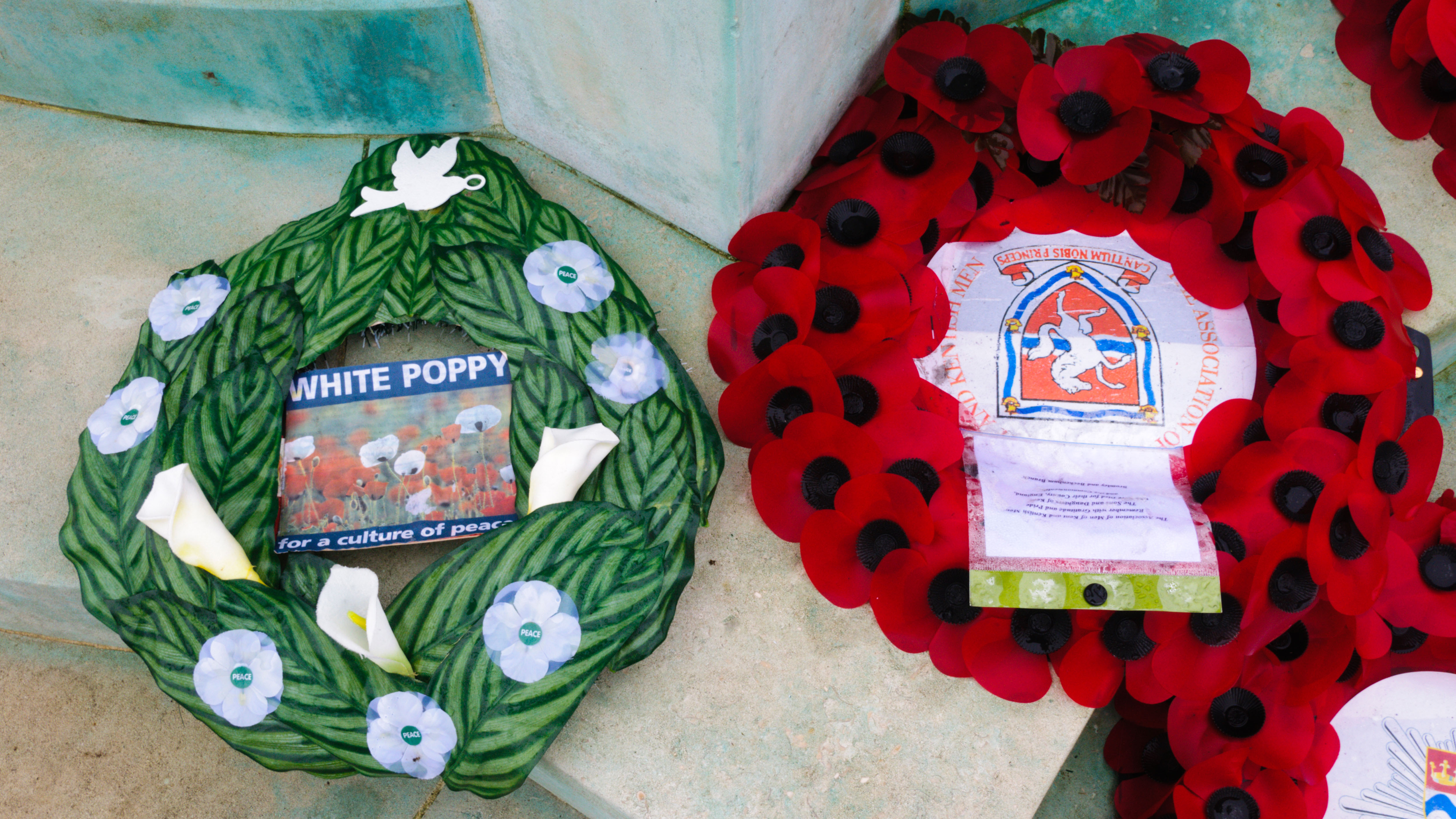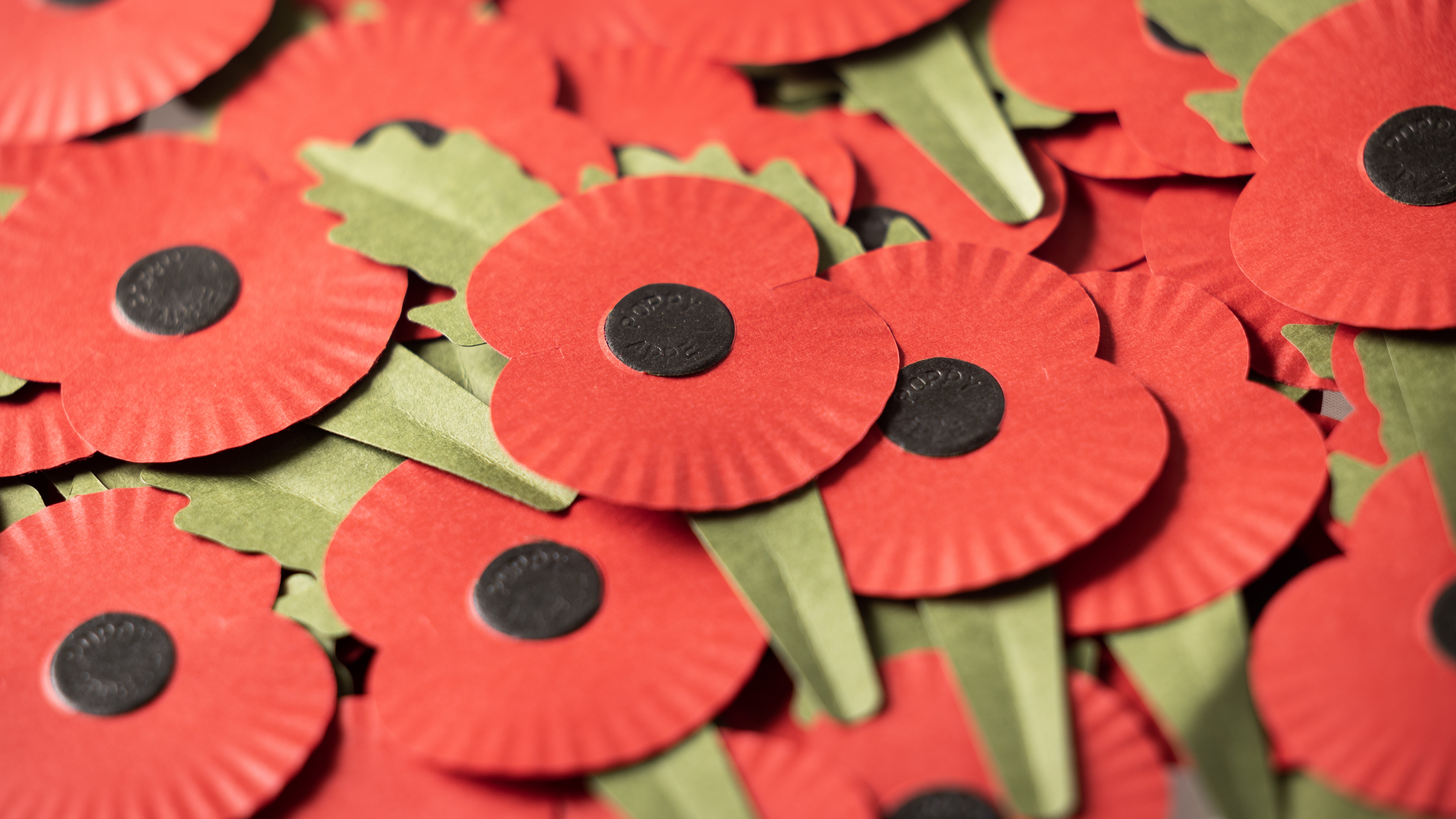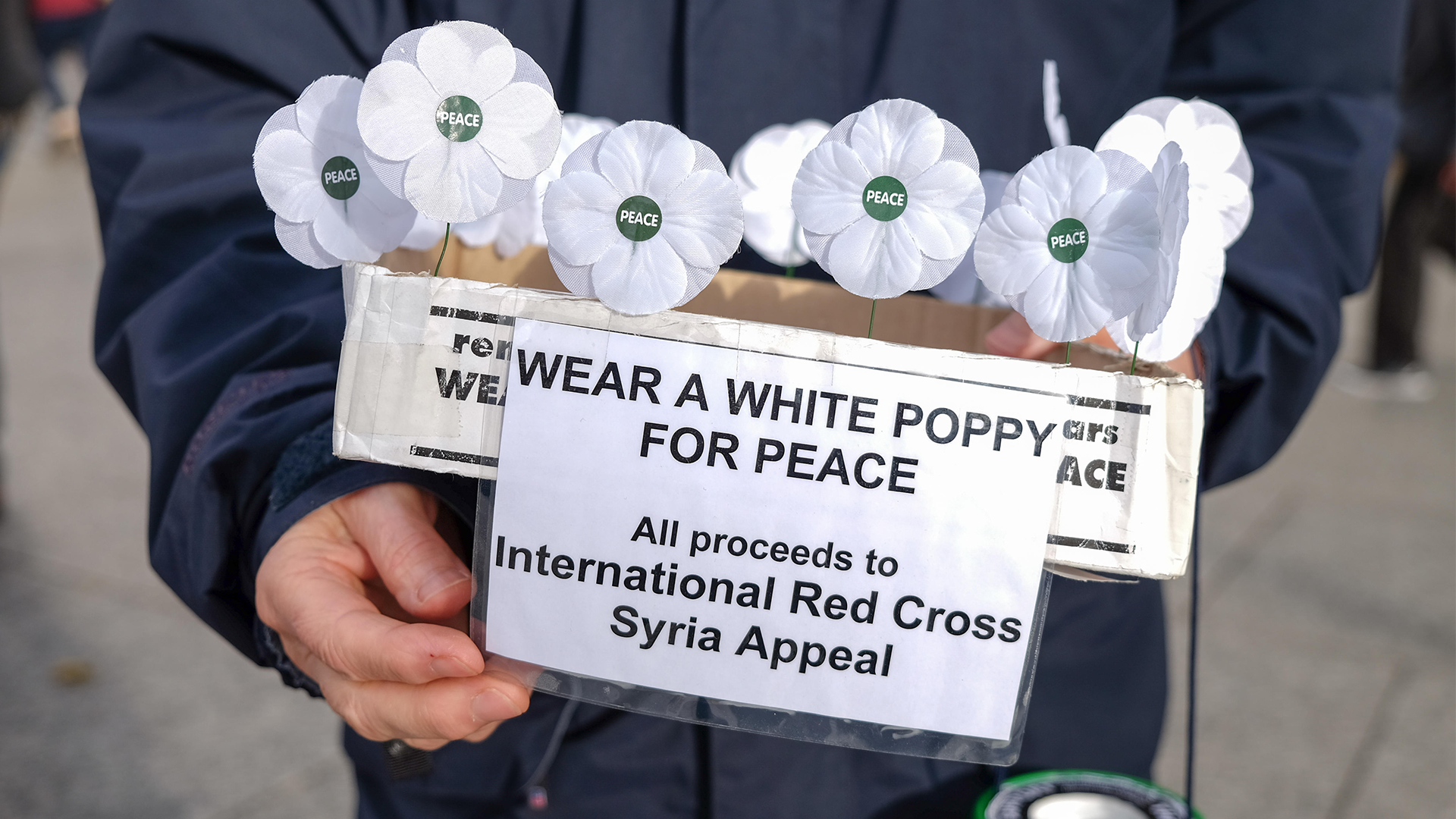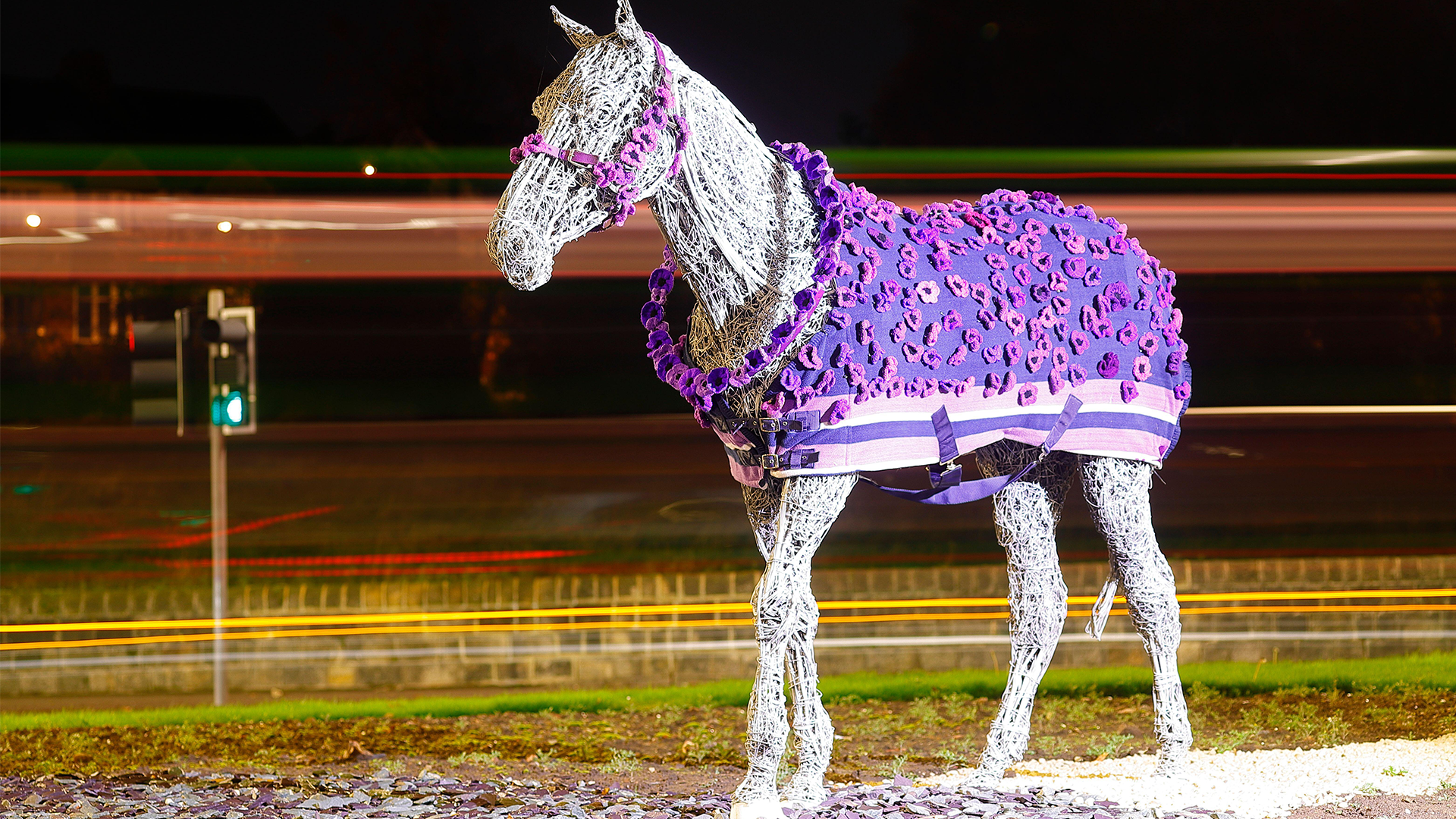
Symbols of Remembrance: Different colour poppies and what each one means

Most countries have a national symbol that honours the lives lost in violent conflict.
Our allies across the Channel wear the indigo bleuet de France, a blue cornflower. Carrying on with the floral theme, the national remembrance symbol of India is a bright yellow marigold, whereas Russia has an orange and black ribbon instead of a flower.
Here in Britain, the poppy has become the ubiquitous symbol of remembrance. Various charities sell poppies in different colours.
You can show your respect by wearing the traditional red poppy, but over the years other colours have materialised, with some seen as controversial and others representing a particular community, such as the black poppy.
Why wear a poppy?
The poppy is a symbol of respect and support for the Armed Forces community, an iconic symbol synonymous with the Royal British Legion.
After the First World War, the battlegrounds of Western Europe were largely an array of churned-up fields, reminiscent of the chaos that had been seen on an unprecedented scale. Then the Flanders red poppies started growing all over the bloodstained battlefields – a beautiful, brightly coloured symbol of hope.
Canadian doctor Lieutenant Colonel John McCrae, who served at Ypres, was so moved by the sight of the resilient flowers that he put pen to paper and wrote one of the most famous war poems, In Flanders Fields.
Moina Michael, an American academic and humanitarian, was inspired by the poem to use the poppy to honour the memory of those fallen in the war.
In Europe, Frenchwoman Anna Guérin took on the mantle of popularising the poppy as an international emblem of remembrance.
In 1921, she persuaded Royal British Legion founder Earl Haig to order nine million poppies, all of which were sold on the anniversary of Armistice Day that year.
In 2023, the first plastic-free and recyclable poppies went on sale.
The RBL, which produces 170,000 poppies a day to meet the demands ahead of Remembrance Sunday, said research and analysis from University College London scientists suggested the new design could reduce emissions by 40%.

Why wear red?
The red poppy is a symbol of remembrance and hope – a belief that the lives that were lost to wars of the past have paved the way for a more stable present and peaceful future.
The red poppy has been sold in the UK in November each year for more than a century.
The first time artificial poppies were sold in Britain was in 1921 to raise money for ex-servicemen and the families of those who had died in the conflict.
The charity most associated with selling the red poppy is the Royal British Legion.
The RBL's Poppy Appeal is its biggest fundraising campaign, held every year in November. Set up by First World War veterans, the charity uses the proceeds to support serving and former British personnel.
In 1922, the Royal British Legion opened a factory run by disabled ex-servicemen to manufacture the poppies, marking the birth of a tradition that continues to this day.

Why wear black?
The black poppy rose represents the contribution to the war effort of African/Black/Caribbean/Pacific Islands and Indigenous Communities.
The black poppy rose was created in 2010 to highlight the history of people of colour. While the organisers of the projects recognise the legacy and historical significance of the red poppy, the black poppy rose focuses on the sacrifices in the name of war of those who were disenfranchised throughout history.
The flower symbolises not only the contribution of those who were enlisted, but also the effect of war on women and children around the world.
The black poppy rose consists of a layer of outer and inner petals. Poppies usually have four to five petals. According to the BlackPoppyRose website, the inner petals of the black poppy represent "the four corners of the world from which we have come and the four corners of the world in which we have fought".

Why wear white?
Dubbed as poppies for peace, the white flowers aim to challenge the way we remember violent conflict.
White poppies are sold by Peace Pledge Union, the oldest pacifist organisation in Britain.
According to the Peace Pledge Union, the white poppy stands for three things: remembrance for all victims of war, a commitment to peace and a challenge to attempts to glamourise or celebrate war.
Critics of the poppy for peace claim that it signals disrespect for those who had given their lives so that we can enjoy the peace that we have now.
People should "ignore" those who wear them, according to former Conservative MP Johnny Mercer, who termed them "attention-seeking garbage" in 2018.
The former Under-Secretary of State for Defence People and Veterans tweeted: "If you don't want to wear a poppy, don't bother. They fought and died so you could choose. But don't deliberately try and hijack its symbolism for your own ends."
Former Green Party MP Caroline Lucas is among those who wears both the white and red poppy.
Those who choose to wear the white poppy believe it focuses on the original message of remembrance – 'never again'.
The Peace Pledge Union argues that, as 90% of people killed in warfare are civilians, wearing both a red and a white poppy can signify that one honours the sacrifices of the fallen military personnel while highlighting all the civilian lives lost in war.

Why wear purple?
The purple poppy represents the suffering of animals in war.
People were not the only ones who were drafted in to fight in world wars and the many conflicts ever since. Millions of animals, especially dogs, pigeons, and horses were integral to the war effort.
It is estimated that 8,000,000 donkeys and horses were killed during the First World War. Comparatively, the war took the lives of 9.7 million military personnel.
The alternative to the Royal British Legion's red poppy was first launched in 2006 by the charity Animal Aid. The popularity of the purple version has grown exponentially in recent years.
The charity has since expressed lament at the way the aim of the purple poppy has been represented in the media.
The former director of Animal Aid Andrew Tyler has said that the dominant narrative has been of animals as war heroes who valiantly laid their lives for us. This was exactly the opposite intention of the charity which was to highlight that animals had no choice in participating in the cruelties of war.
This led the charity to replace the poppy with the purple paw badge in 2015.
The Purple Poppy Appeal has since been headed by the War Horse Memorial, with proceeds going to animal welfare charities such as Blue Cross and World Horse Welfare.
:: This was originally published in 2023 – it has been updated to reflect this year's Remembrance period.









